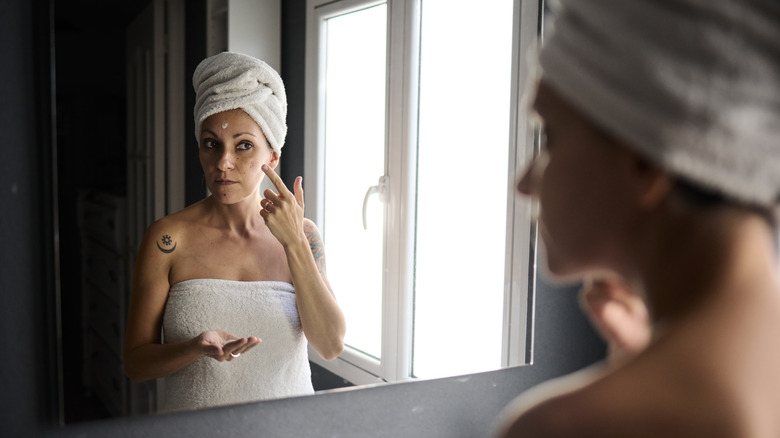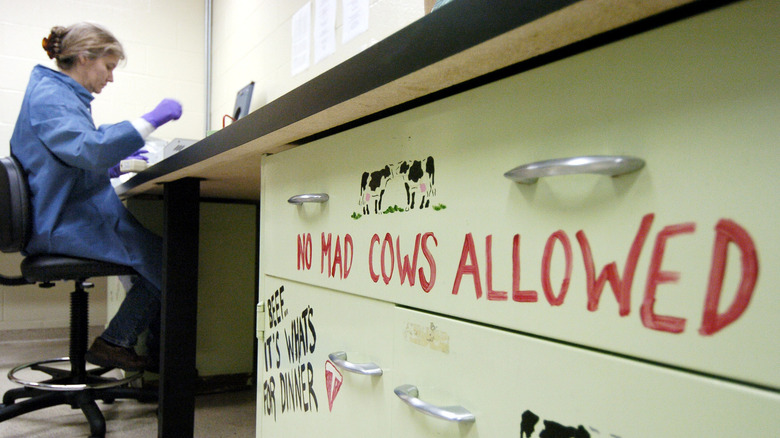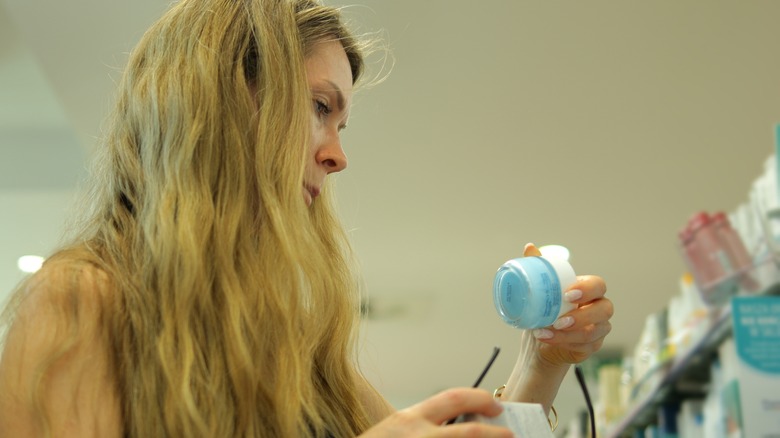Here's Why The TikTok Beef Tallow Skincare Trend (Probably) Won't Give You Mad Cow Disease
We may receive a commission on purchases made from links.
Moo-ve over, retinol. TikTok has yet another skincare darling, and this one is fresh from the farm: beef tallow, which plenty of SkinTokkers revere as a moisturizer, tightener, brightener, firming cream, and all-around skin glow-up winner.
If you're saying, "Wait? What?", you're not alone. Who would have thought that fat rendered out of a cow would make headline news? But as it turns out, beef tallow has a history of being used on the skin. After all, like other saturated fats, beef tallow is solid at room temperature. This makes it smooth and velvety — the perfect consistency for rubbing on your face, neck, or body.
But is using beef tallow as a catch-all skin-friendly balm a good idea? Some say no, citing a "beef" with the product's animal association. Specifically, worries have arisen about the potential for beef tallow made from animals infected with mad cow disease to pass the disease topically into humans. It's an interesting argument and one that deserves a discussion, which is why Health Digest asked Dr. Brendan Camp, a double board-certified dermatologist of MDSC Dermatology, for his professional opinion about the safety of the latest TikTok beef tallow skincare regimen.
A conundrum for consumers craving softer skin
Officially called bovine spongiform encephalopathy, mad cow disease affects the brains of cows, eventually causing death, per the U.S. Centers for Disease Control and Prevention. At the root of the disease is a type of protein called prion. Mad cow disease is eventually fatal to cows, and it can sometimes be passed along to humans who eat meat from infected cows. In humans, this can lead to the development of variant Creutzfeldt-Jakob disease. Variant Cruetzfeldt-Jakob disease is rare, but the U.S. Food and Drug Administration (FDA) notes that in the few known cases, it's just as fatal to humans as mad cow disease is to cows.
This circles back to worries about beef tallow. For instance, let's say a beef tallow-based moisturizer (or just at-home beef tallow made by following a tallow-focused cookbook recipe) was derived from a cow that had mad cow disease. Could the beef tallow moisturizer somehow transfer the disease into a human through the pores?
Fortunately, it looks like we shouldn't be too worried about that. "Beef tallow is rendered fat and is an unlikely source of prion diseases like mad cow disease," Dr. Brendan Camp says. Besides, he adds that "[t]he FDA reports that tallow is not a prohibited cattle material." In other words, you're not likely to get mad cow disease from a beef tallow facial.
Considerations before slathering skin with tallow
This doesn't make beef tallow a surefire fit for your beauty routine, however. Though Dr. Brendan Camp's not worried about mad cow disease being carried to humans through beef tallow skincare, he does mention that skincare products made from beef tallow aren't FDA-regulated. Consequently, there's no oversight to guarantee that any beef tallow lotion product is completely safe or free from unwanted contaminants or additives.
Still, if you want to give beef tallow a go, you may have some emerging science on your side. A 2024 review of topical tallow application outcomes in Cureus found that tallow could be therapeutic, particularly for people with skin problems like dryness and dermatitis. Although the review suggested that tallow could have some side effects and that more research was needed, mad cow disease wasn't mentioned. Plus, per the Mayo Clinic, beef tallow has potentially skin-soothing and anti-inflammatory properties. Just keep in mind that beef tallow cream is an animal-based product, which Dr. Camp says to consider if you've embraced a pescatarian, vegetarian, or vegan lifestyle.


